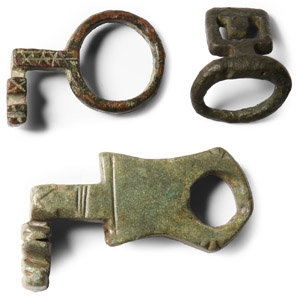Home > Auctions > 3 - 8 September 2024
Ancient Art, Antiquities, Natural History & Coins
Auction Highlights:
From a collection acquired on the UK art market from various auction houses and collections mostly before 2000.
From an important Cambridgeshire estate; thence by descent.
Cf. Boucher, S., Inventaire des Collections Publiques Françaises - 17 Vienne: Bronzes Antiques, Paris, 1971, item 34, for type.
UK gallery, early 2000s.
Acquired 1980-2015.
Ex Abelita family collection.
From a collection acquired on the UK art market from various auction houses and collections mostly before 2000.
From an important Cambridgeshire estate; thence by descent.
Cf. Rolland, H., Bronzes Antiques de Haute Provence, Paris, 1965, item 78.
Venus Anadyomene (Greek: Ἀναδυόμενη "Rising from the Sea") is an iconic and much-repeated image of Venus (Aphrodite) which was popular in the ancient world and was revived in the Italian Renaissance, Baroque and Rococo periods. The goddess is shown emerging from the water and wringing out her long hair.
Old collection, acquired in the 1970s.
Acquired by inheritance from Mr N.S.
Accompanied by an academic report by Dr Marina Mattei and Dr Laura Maria Vigna.
This lot has been checked against the Interpol Database of stolen works of art and is accompanied by search certificate no.12084-211893.
Cf. Mansuelli, G.A., Galleria degli Uffizi, Le Sculture, Parte l, Roma, 1958, pp. 159-160, n. L32; Sciarra, B., Brindisi. Il Museo Archeologico Comunale, Brindisi, 1976, p. 8, n. 34; Bonanno, A., Un gruppo di ermette decorative a Malta, in ArchCl 29, 1977, pp.399-410, tavv. LL2-LL6, specialmente p. 402; Faedo L., Camposanto Monumentale di Pisa, Le Antichità, ll, a cura di Salvatore Settis, Modena, 1984, p.178, n. 81; Moreno, P., Viacava, A., I Marmi Antichi della Galleria Borghese, Roma, 2003, pp. 767-168, n.138.
The head with elaborately curled hair and diadem could represent Ariadne, as shown by comparisons with a fragment of a two-faced herm with bearded Dionysus and Ariadne preserved in the Antiquarium Ostiense, dated to the lmperial Roman age. The heads could be interpreted either as Ariadne and a Maenad, or as two Maenads being characterised by the diadem and long taeniae. The association of these figures with Dionysus is congruent with the typology of the herm, which refers to rural places and theatres. Numerous herms in fact attest that this type of sculpture was used in contexts linked to Dionysus and his sacred procession as well as, obviously, the representation of Ariadne, his female partner and double. The example fits into the class of domestic sculpture with a decorative function, mostly used to adorn peristyles and viridaria; the type placed at the crown of columns and pillars is quite documented, in particular in the version with the head of Dionysus contrasted with that of Ariadne or a Maenad.
Collected from 1970-1999.
From the collection of the late Mr S.M., London, UK.
Private collection formed since the 1940s.
UK art market.
Property of an Essex, UK, gentleman.
Acquired in the 19th century.
Ex Jeger collection, Switzerland.
Cf. Hakanen, V., 'VI Wall Plaster Fragments' in Berg, R., Kuivalainen, I., Domus Pompeiana M. Lucretii, IX,3, 5.24, The inscriptions, Works of Art and Finds from the Old and New Excavations, Vantaa, 2019, pp.196-224, figs.3-4.
These small fragments, for analogies with the fragments of Pompeii, seems to belong to the second style of Roman painting, red panels representing highlight and shadow, decorated with vegetal interlaces. Some panels were probably framed by a red grenade fillet. A fragment shows alternate blue and red colour over a cream background, maybe pertinent to a socle.
From the private collection of the late Victor Brox.
Cf. The British Museum, museum number 1975,0804.28, for similar.
Ex German art market, 2000s.
Acquired from an EU collector living in London.
From the collection of Surrey, UK, gentleman.
Ex German art market, 2000s.
Acquired from an EU collector living in London.
From the collection of Surrey, UK, gentleman.
From the collection of the famous author, writer and speaker, Gordon Bailey, Essex, UK; formed since 1968.
613 - 624 of 3369 LOTS

.jpg)

.jpg)
.jpg)
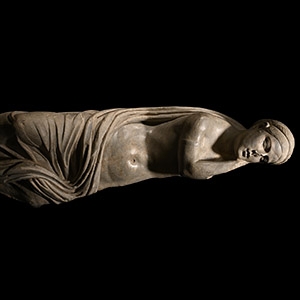
.jpg)
.jpg)

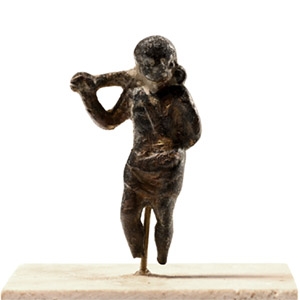

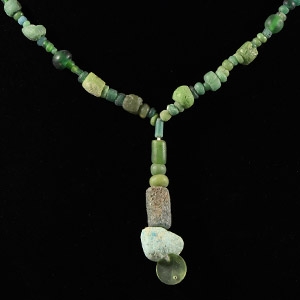
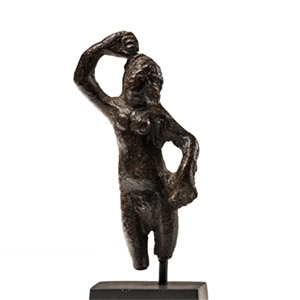

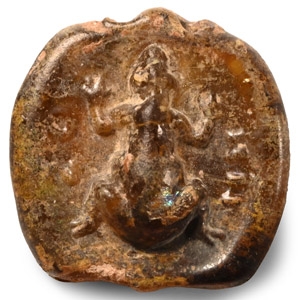
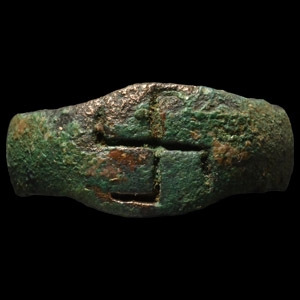
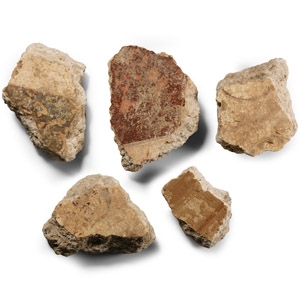

.jpg)

